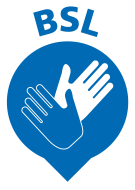Keep someone alive until the ambulance crew arrives
If someone you’re with has a cardiac arrest, starting CPR as quickly as possible will give them the best chance of survival.
Learn CPR
It only takes a few minutes to learn how to give someone CPR. Watch our quick video to learn more.
What is a cardiac arrest?
A cardiac arrest is a medical emergency that happens when the heart suddenly stops pumping. This prevents blood from flowing to the brain and other vital organs, depriving them of oxygen.
Without immediate treatment with CPR, the person will die within minutes.
What is CPR?
CPR stands for cardiopulmonary resuscitation. Chest compressions pump blood around the body to keep someone alive until the paramedics arrive.
What are the signs of a cardiac arrest?
If someone is in cardiac arrest, they will collapse suddenly and:
- Lose consciousness
- Be unresponsive
- Stop breathing or not be breathing normally – they could be making gasping noises.
If you see someone in cardiac arrest, first assess the situation. Think DRS ABC:
- Danger - make sure the area is safe
- Response - shake the person’s shoulders firmly and ask loudly if they’re okay
- Airway – tilt their head back and check their airway is open and clear
- Breathing – check whether the patient is breathing by looking at their chest to see if it’s rising and falling, or by placing your ear above their mouth and looking down
- Compressions – if the patient is not breathing normally, start hands only CPR.
As you begin, ask someone nearby to find a defibrillator.
How to carry out CPR on an adult
- Kneel next to the patient and place the heel of your hand on the breastbone at the centre of their chest.
- Place the palm of your other hand on top and interlock your fingers.
- Using your body weight (not just your arms), press down hard and fast by 5 to 6cm on their chest.
- Keeping your hands on their chest, release the compression and allow their chest to return to its original position.
- Repeat these compressions at a rate of 100 to 120 times a minute until the ambulance arrives. Try pushing to the beat of Stayin’ Alive by the Bee Gees.
Use a defibrillator as soon as you can.
Translated CPR guides
In addition to English, we have translated CPR guidance for adults and childre in Arabic, Kurmanji, Sorani, and Farsi. To view and download these guides, please click the links below.
Arabic (العربية) - adults, children
Kurmanji (Kurmancî) - adults, children
Request a cPAD session from our community resuscitation team, email first.
Find out more at First aid - CPR - NHS (www.nhs.uk)

